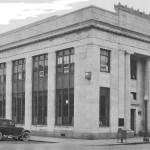Lift Bridge changes
From MinnPost:
Duluth considering new lift bridge plan that would limit openings for small vessels
Duluth’s Aerial Lift Bridge may be in for a new schedule that will mean small boats may have to wait.
Recommended Links:
Leave a Comment
Only registered members can post a comment , Login / Register Here













15 Comments
Shane
about 14 years agodlhmn
about 14 years agoShane
about 14 years agoTony D.
about 14 years agonatalie
about 14 years agoClaire
about 14 years agoPatsy
about 14 years agoTony D.
about 14 years agohbh
about 14 years agoSam
about 14 years agobaci
about 14 years agoClaire
about 14 years agoTony D.
about 14 years agoadam
about 14 years agoedgeways
about 14 years ago